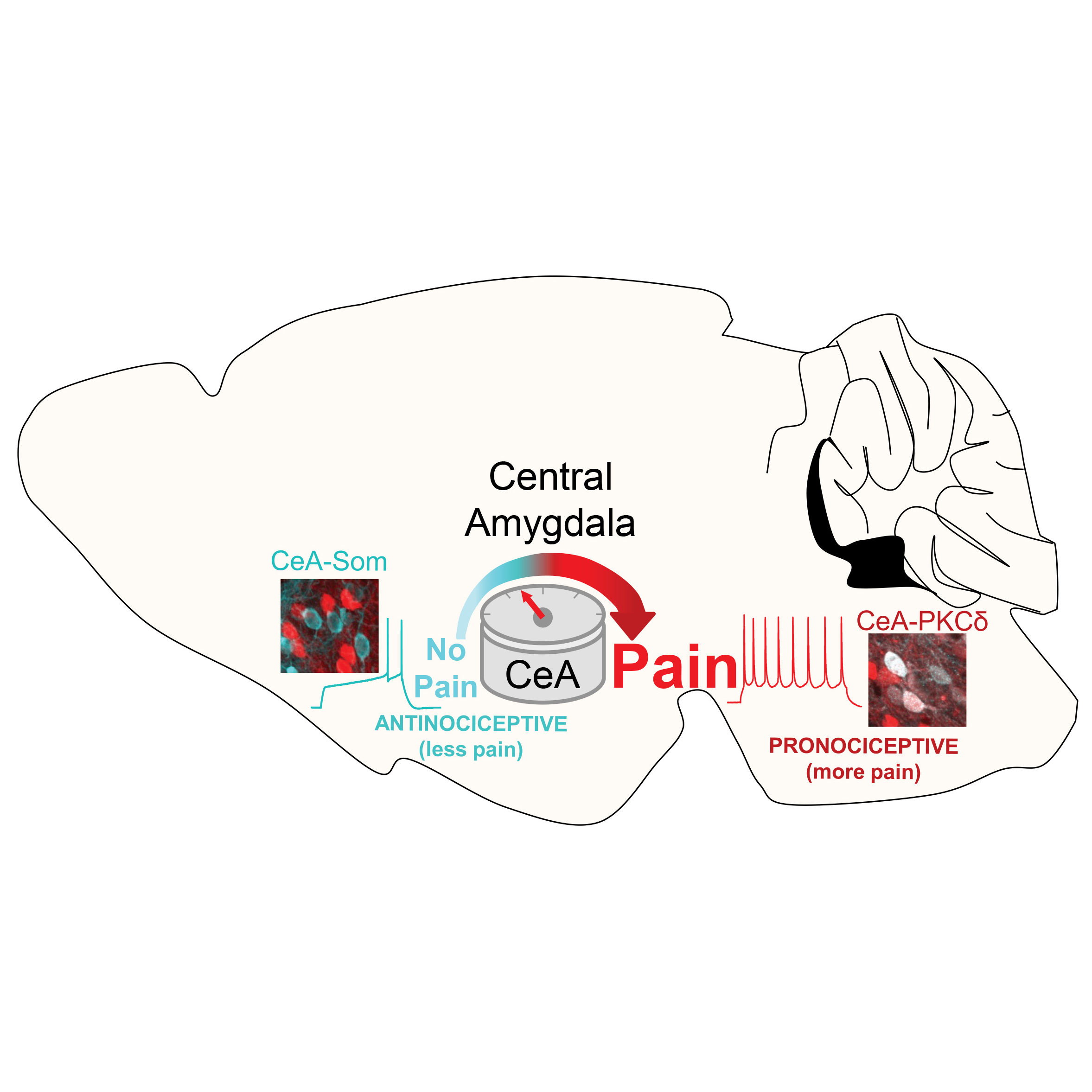Study Explains How the Amygdala Regulates Pain

A new study conducted in mice explores the previously unknown role of the central amygdala (region of the brain associated with emotional processes) in upgrading and downgrading pain signals in the brain. The study, which was conducted by researchers at the Division of Intramural Research at NCCIH, was published in the journal Cell Reports.
The researchers found that there is a “switch” in the central amygdala that can both turn up or turn down pain signals. The “switch” acts more like a “pain rheostat,” similar to a home thermostat that regulates temperature—the pain rheostat reacts to pain signals to regulate pain sensations. Working in mice, the researchers found that activity in neurons that express protein kinase C-delta (CeA-PKCδ) turned up the pain rheostat and demonstrated increase in pain-related responses. Conversely, researchers found that activity in neurons that express somatostatin (CeA-Som) turned down the pain rheostat, inhibiting nociception or the chain of activity in the nerves required to communicate pain.
During the experiments, researchers were able to take advantage of molecular genetic approaches that allow them to fluorescently label and manipulate the activity of these two central amygdala cell-types. They found that when they blocked CeA-PKCδ neurons, pain activity decreased. When researchers activated CeA-Som neurons, they observed a marked analgesic response in mice.
The researchers noted that these results demonstrate that CeA can amplify or suppress pain in a cell-type-specific manner, which uncovers a previously unknown mechanism underlying bidirectional control of pain in the brain.
Reference
- Wilson TD, Valdivia S, Khan A, et al. Dual and opposing function of the central amygdala in the modulation of pain. Cell Reports. 2019; 29:1-15.
Publication Date: October 8, 2019